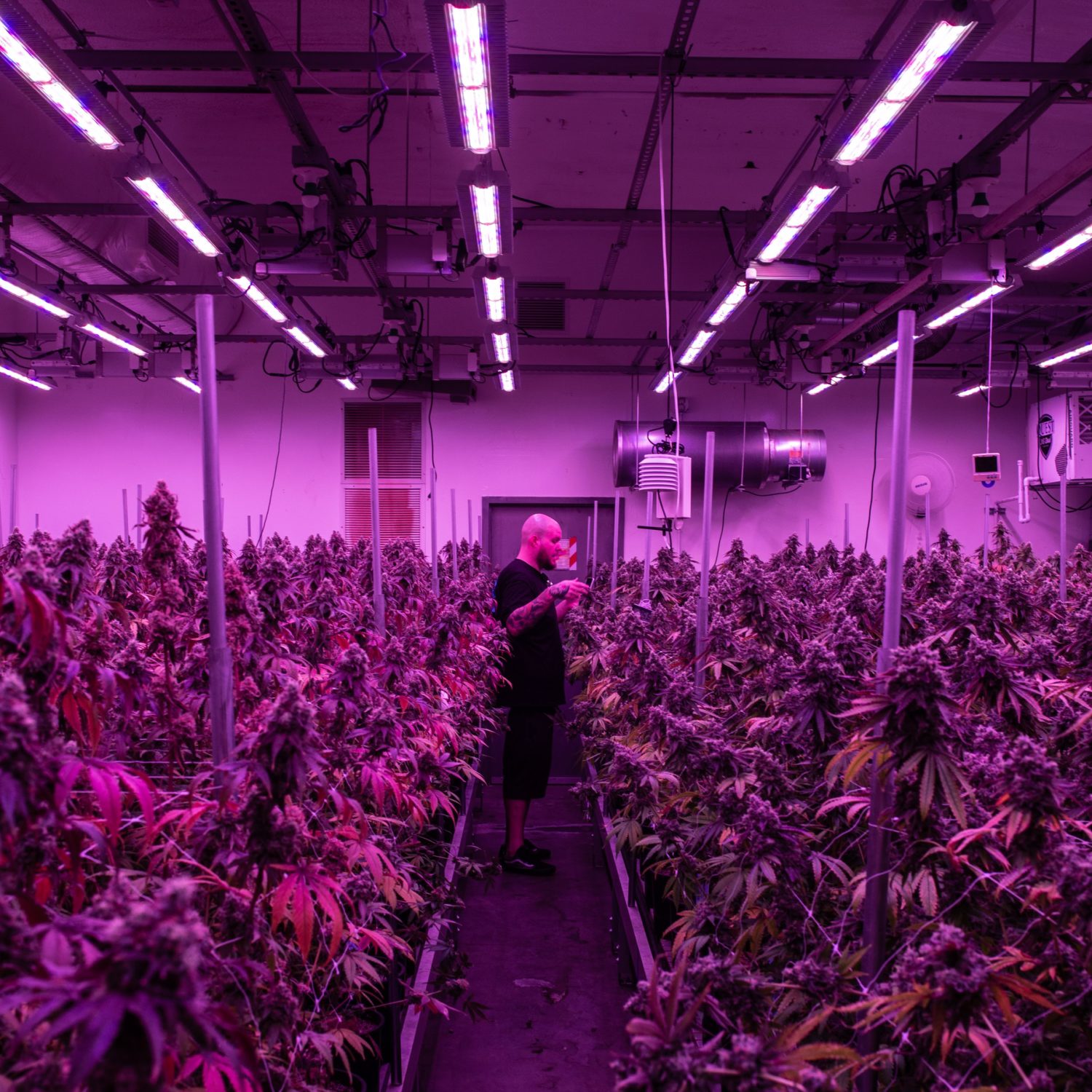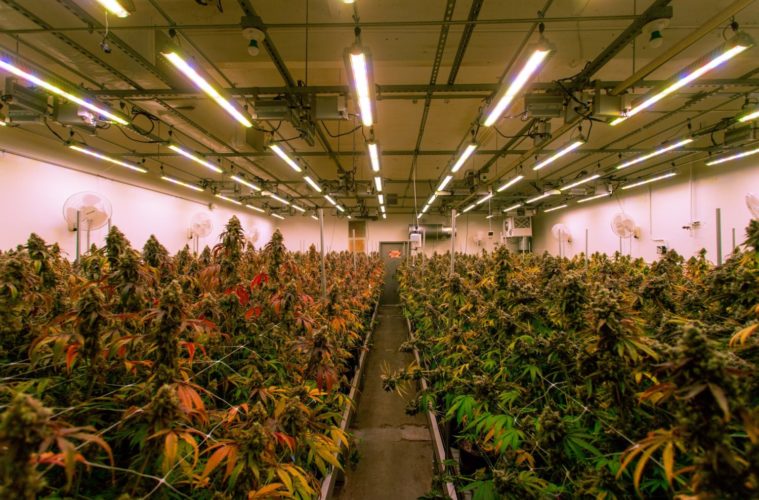The cannabis industry has a limited time to weigh in on a California Energy Commission proposal to force new energy efficiency standards for indoor lighting used in horticulture.
While LEDs are certainly the future, so is a Mars colony. We have a lot of the hardware we would need to get there right now, sure, but those final steps are clearly at least a little bit in the future. The same can be said for the promise of LED. Yes, everyone is hopeful those final quality hurdles will be jumped in the not-too-distant future, but in the meantime, fixtures that use high pressure sodium lights are what the best pot in the world is being grown under.
If people aren’t allowed to use HPS lights to grow their weed, the quality potential of cannabis in the California legal marketplace will be artificially capped by the five utility companies that bankrolled the report proposing the new change.
What is the actual change? Proposed changes to the energy code, which historically only covered commercial and industrial buildings, would expand the code to include indoor and greenhouse horticultural operations over 1,000 square feet in size. This move would impact conventional agriculture, cannabis and hemp.
One of the people attempting to rally the industry to take action against the proposal is Bob Gunn. After working for 13 years in the utility sector, Gunn founded Seinergy in 2015 to help the cannabis industry deal with utility regulators.
“I started hearing about the California Energy Commission looking at energy code for horticulture lighting last year,” Gunn told L.A. Weekly. “The first time it really came up was a a utility conference – you know, utility people talking about cannabis energy use.”
Gunn argues one of the things pushing California to take action is watching other states make moves to regulate the industry’s total power load on the grid. “So, I started to hear about Massachusetts starting to regulate. They put in 36 watts per square foot, which is annoying. Illinois did something very similar. And then California saying, well we need to kind of, you know, whack down the energy use somehow,” he said.
Then the confusion started. Gunn explained how when people in cannabis talk about lighting it is very different from when the rest of the world says lighting: “We think, you know, two watts per square foot for an office building or one and a half watts per square foot for a restaurant like that’s the energy code called title 24.”
Gunn said right now when people use an HPS, or any type of lighting source within the manufacturing process that takes place in a controlled environment, it’s generally not regulated. “It’s like they don’t say how much energy per gram of steel smelting you can use or how many kilowatt hours per donut you can make, but that’s what they’re starting to do with cannabis. But they’ve zoomed in on horticulture lighting.”
While there are other regulations that cultivators would have to jump through with the new energy code, dehumidifier and greenhouse efficiency being a couple, Gunn believes the lighting regulations are positioned to cut the industry off at its knees. This led to him getting involved in the stakeholder process around the decision in the early goings. He was not impressed with how it played out.
At the time, the Energy Commission was saying it wasn’t their proposal. It was funded by the Codes and Standards Enhancement (CASE) Initiative completely bankrolled by Pacific Gas and Electric Company, Southern California Edison, San Diego Gas & Electric Company, Los Angeles Department of Water and Power, and the Sacramento Municipal Utility District. Right off the bat the five utilities companies determining the fate of the quality of California’s cannabis noted they don’t take any responsibility for the accuracy, completeness or usefulness of any data, information, method, product, policy or process disclosed in this document.
Gunn explained anybody could take a proposal to the CEC as a stakeholder. Essentially, the CASE team hired consultants to write the report they are taking to the CEC. But Gunn argues they fell short on talking to actual farmers.
He would have expected the supply chain actors, who are selling equipment into the market, to be spoken with about the level of efficiency people are buying and what the technical viability is of pushing the bar to a higher level, and then the actual growers themselves. Gunn argues the reality has been input from out-of-state growers and regulators.
“And don’t get me wrong, I help people sell LEDs. I’m a fan of LEDs. But not as a mandate for people. Want to opt in and make the commitment and do the R&D? Make that investment? Absolutely. Let’s help them do it,” Gunn said.
Gunn notes there is a chance that HPS could be worked in, if just the light is graded. The bulb itself is the most efficient part of the process, but once you get the other components of the light involved the efficiency drops quickly. However as it stands, only LED would be efficient enough to meet the 2022 standards.
Gunn said the most important thing California cultivators and consumers can do in this moment to prevent the change is submit comments to the CEC docket. The meeting concerning the Title 24 modification is on December 9.
Gunn said if the industry doesn’t act, the 75 percent increase in what the new lights cost will hit California’s legal cannabis cultivators to the amount of $255 million in the coming years without any of the subsidies or rebates normally available to ease such transitions. Most importantly, that number does not include the potential impact of lighting changes on the efficiency of a grow room or the quality of flower produced.
Some California cannabis companies who grabbed their chunk of the market growing under HPS lights now prep for the future. Among those with LED test rooms is the award-winners at Alien Labs.
Now on their fifth LED run, Alien Labs’ founder Ted Lidie broke down their experience with the future tech. And the longtime presumption LEDs would eventually take over somewhere down the line.

Lidie in the LED test room.
“It always looked enticing,” Lidie told L.A. Weekly. “But the tech just wasn’t there. The price wasn’t there. When you’re coming up, R&D is so elective. We focus a lot on seeds. That’s why we didn’t get in on it early.”
So how is the LED experiment going for a company growing some of the most coveted weed on the legal market? It’s getting there.
“And it’s not to say that it isn’t good quality, it’s just that it looks so much different from HPS and we still kind of prefer the look of HPS. Maybe preference isn’t the right thing, but we have been delivering a product that looks a certain way. It can be jarring to come out with a product that looks differently, even if the quality is the same. Or even better, you know,” Lidie said.
Lidie said one of the biggest issues for LED weed at the moment is bag appeal. He claimed from what he’s seen that you could give him 10 pieces of LED weed and 10 pieces of HPS weed and he could pick it out easily. He explained the main structural difference is that it’s way denser with shorter trichome stalks. But he argued in a blind tasting, where it’s already rolled up, he wouldn’t be surprised if people leaned more towards the LED weed.
We asked Lidie if it felt weird that the power companies were going to be able to dictate the way he produced his product. “Yeah, it feels weird, but not in a conspiracy way,” he replied.
Lidie said he wasn’t surprised in the slightest at cannabis taking the blame on power issues despite wider problems that have plagued the utility sector since before the industry even existed. He said this wasn’t the first thing the industry would be scapegoated for and it won’t be the last.
We asked Lidie if he were doing a grow room buildout right now, given the circumstances, would he toss up a couple hundred LEDs or HPS lights and just switch them out later? “We’re about to drop 800 new lights, we’re going HPS all the way,” he replied.
Advertising disclosure: We may receive compensation for some of the links in our stories. Thank you for supporting LA Weekly and our advertisers.

